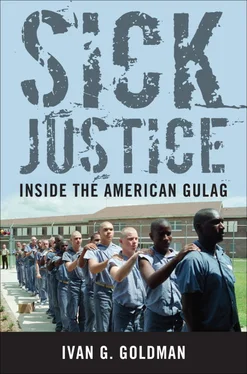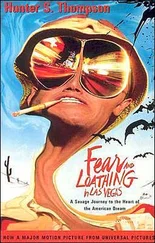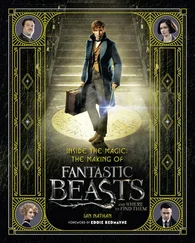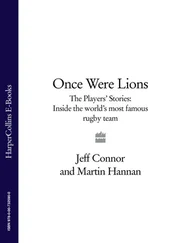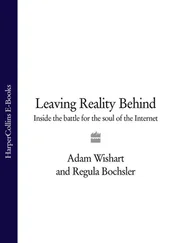Thus, a totally untrained, slight young woman was drafted as an unpaid undercover agent and charged with the task of inserting herself into the framework of criminal enterprises. The cops handling her had been trained to believe there was no essential difference between a small-time marijuana seller and a dangerous thug, so they assumed that hard-core offenders would also fail to make the distinction and that she’d blend right in. Amazingly, her handlers armed her with $13,000 in marked bills and instructed her to buy 1,500 ecstasy pills, two ounces of cocaine, and a handgun. She’d make this purchase alone and from two men she didn’t know. Police knew that at least one of the dealers had a violent criminal history. They also demanded that she wear a wire so that it would be easier for them to get a conviction. The wire, of course, magnified the danger to Hoffman.
The police gave her plenty of assurances and acted as though they knew what they were doing, and she wanted to believe them. They were the experts. She knew nothing about guns, cocaine, hidden taping devices, or undercover work. The cops may as well have pulled a random citizen off the street and parachuted her into a terrorist camp.
Hoffman was naturally excited by the crazy turn her life had taken, but we also know she was frightened and confused by the role police were forcing her to play. The day of the sting she called her father, Irv Hoffman. He had no knowledge that Tallahassee cops had his daughter under their collective thumb and were using her as bait for dangerous felons. “Dad, I’m really thinking about you today,” she told him. That was the last conversation they would ever have. She was his only child.
“NO IDEA WHERE I AM”
The men targeted by the police changed the location of the transaction at the last minute. Hoffman tried to inform her handlers about the move, but transmission was poor. Amazingly, the police weren’t tailing her and didn’t have her car in sight. They lost her when she didn’t turn into the park where they were waiting. “I have no idea where I am,” she said. Those were her last recorded words. Later the police who’d guaranteed her safety claimed that they advised her against going to the new rendezvous; they said that what resulted was her own fault. But given the faulty transmissions over the poor communications setup, it wasn’t clear that she even received their last-minute instruction. It all happened fast, there had been no rehearsal.
Two days later Hoffman’s body, clad in a Grateful Dead sweatshirt, was found in a ditch south of the city. She’d been shot five times with the .25-caliber stolen pistol that she’d been instructed to purchase. Police later arrested Deneilo Bradshaw, twenty-three, and Andrea Green, twenty-five, and charged them with murder. As word of the monumental folly seeped out and higher-ups were peppered with questions, a public information officer, David McCranie, was appointed to handle inquiries. Describing Hoffman as “very bright” and “very talented,” he took turns blaming her for poor execution of the plan and the shooters for shooting her. He mouthed a series of inapplicable slogans, such as “Safety is paramount,” and refused to concede that anyone in the department was at fault. Hoffman’s attorney, Johnny Devine, who had not been informed about his client’s undercover status, recalled that police tried “to point the arrow in every other direction. They took a defensive step from the start.”
Apparently hoping it would buttress their argument that Hoffman herself had a criminal background, authorities publicized her 2003 citation for underage drinking. They also claimed she was a major drug dealer, but as her father later pointed out, she barely had enough money to pay the rent, which doesn’t exactly fit the pattern of a major drug dealer. Friends said she and they shared small quantities of weed and sometimes ecstasy. They scoffed at the suggestion that she was a “major dealer.”
Well, McCranie said, Hoffman didn’t have to accept the confidential-informant deal. Countless other drug offenders have been offered the same deal, he said, and a “lot of people say no.” But the whole process was utterly foreign to Hoffman. Her life was hanging by a thread, and no one was watching the thread.
No matter how carefully they are screened, it’s inevitable that weak-minded or amoral people will achieve positions of authority. As long as we keep Quixotic, unjust laws on the books, harmless people will suffer. Because the law computed Hoffman’s actions as being worthy of prison time, she suspended her life and became an indentured servant in a risky trade.
The day Bradshaw was convicted of killing Hoffman, a reporter found Irv Hoffman beside his daughter’s grave. He’d brought a carrot cake, her favorite, and he sat there all day in a lawn chair. It was her birthday. She’d have been twenty-five. “She was full of life and mischief,” he said. 2
After the media spotlight shined on the circumstances of Rachel Hoffman’s death, one of the officers involved was fired, but he quickly won reinstatement and was transferred to another job in the department. A year after the murder, Florida passed legislation dubbed “Rachel’s Law.” Billed as an important edict, it would, the public was told, tighten rules on police use of confidential informants. New rules required police to provide special training for officers handling informants and decreed that such informants be instructed that their sentences wouldn’t necessarily be reduced in exchange for their work. The law also spelled out that informants had the right to request a lawyer (a right they already held). 3Despite the new language, future suspects could still be caught in the same trap that killed Hoffman. Drug-war diehards continued to control the ground. 4
6
Three Strikes and You’re Out
The law ought to impose no other penalties but such as are absolutely and evidently necessary.
—Thomas Paine,
The Rights of Man
In November 2012 more than 60 percent of California voters passed Proposition 36, ending eighteen years of a three-strikes experiment gone wrong. The new measure retained the concept of extending sentences for repeat offenders, particularly those facing a third conviction, but it established grounds for people serving time for nonserious and nonviolent crimes to ask for shorter prison sentences. 1Under the new law’s reforms, approximately twenty-eight hundred inmates were eligible to file for sentence review, and judges were obliged to reduce sentences unless doing so would endanger the public.
By early 2013 judges across the state were examining petitions. On February 11, 2013, for example, Los Angeles County judge William C. Ryan reduced sentences for five people convicted of relatively minor crimes. Among them was Richard Packard, eighty-one, who’d already served seventeen years for stealing forty-five packs of cigarettes from a supermarket, and Robert Benavidez, seventy-four, who’d served nearly sixteen years for possessing a balloon containing ten dollars’ worth of cocaine and heroin. 2California’s three-strikes rulings—with their catchy, instantly understandable slogan that evoked the all-American pastime, hot dogs, and Babe Ruth—had left a lengthy trail of human detritus.
The tale of Gregory Taylor probably motivated many voters who approved Proposition 36. Modern America’s own Jean Valjean, Taylor was locked up for thirteen years after two security guards caught him trying to lift out the screen on the door to a Los Angeles church pantry in 1997. Homeless and hungry, he was a frequent guest at the pantry, but the doors wouldn’t open for another hour. Had the guards consulted the priest who operated the facility, the Reverend Allan McCoy—a kindhearted man not unlike Victor Hugo’s Bishop Myriel—he’d have informed them that Taylor was a longtime friend who sometimes slept in the church and that he would take care of it. But instead the guards turned Taylor over to local police. 3
Читать дальше
